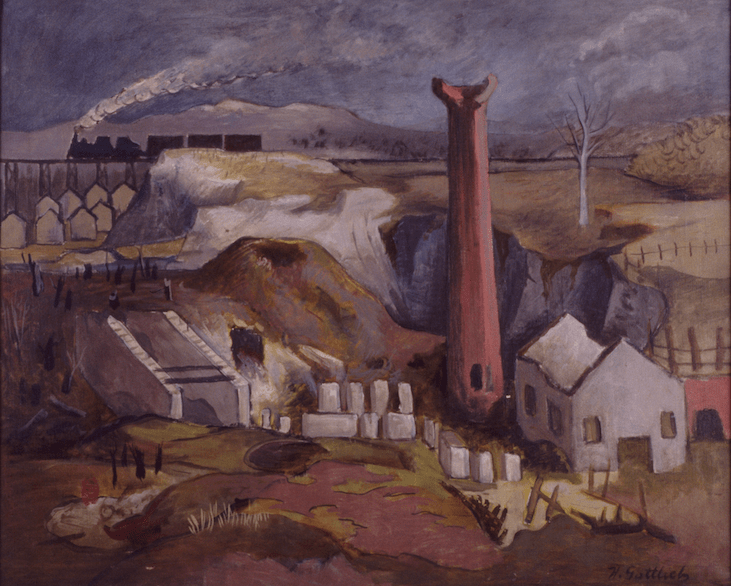In 1935, in an effort to curb the mass unemployment of the Great Depression, President Franklin D. Roosevelt created the Works Progress Administration (WPA), one of a number of domestic programs known collectively as the New Deal. While much of the WPA was focused on improving the nation’s infrastructure, it also provided substantial resources for the arts and artists through the Federal Art Project (FAP), which employed 3,500 artists by 1936, and was instrumental in launching the careers of Jackson Pollock, Willem De Kooning, and Stuart Davis, among many others.
The Federal Art Project (FAP) was also responsible for establishing more than 100 art centers around the United States. Included among these was the WPA Experimental Gallery in Oklahoma City, which would become the WPA Oklahoma Art Center when the government funded a new, larger space, under the direction of well-known artist Nan Sheets. When President Roosevelt dissolved the WPA in 1942 following the outbreak of World War II, the Oklahoma Art Center became an independent entity. At that time, the Federal Art Project’s Central Allocation Unit gave twenty-eight works by twenty-six artists to the city of Oklahoma City. When the Museum’s predecessor, the Oklahoma Art Center, incorporated three years later, the WPA collection provided the basis for the Museum’s new permanent collection.
The Museum’s WPA collection features a large proportion of rural American landscapes and depictions of labor, infrastructure, and industrial development. All are figurative, as was favored by the WPA, and there are significant representations of female and foreign-born (predominately Russian) artists in the Museum’s holdings. The WPA collection also contains two artists with local ties, Muscogee (Creek)/Pawnee painter and muralist Acee Blue Eagle and printmaker Elmer Capshaw.
Recent news: Photos & interviews: Oklahoma City Museum of Art celebrates 75th anniversary of its foundational WPA collection
Harry Gottlieb (American, 1895–1992). Ruins Along the Hudson, ca. 1937. Oil on canvas. Oklahoma City Museum of Art. WPA Collection, 1942.041










